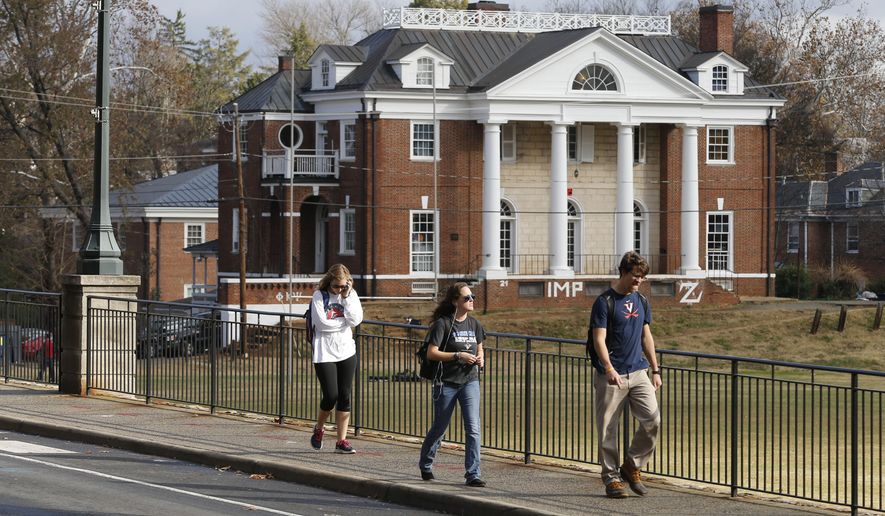Female college students are less likely to report instances of rape than women the same age who are not in college, says a new Justice Department report released Thursday on the heels of a crumbling sexual-assault claim at the University of Virginia.
“Among student victims, 20 percent of rape and sexual assault victimizations were reported to police, compared to 32 percent reported among non-student victims ages 18 to 24,” said the report from the Bureau of Justice Statistics.
But investigators also found that women not in college were 1.2 times as likely to be the victims of rape.
“We know that this crime is very underreported,” said Lisa Maatz, the Vice President of Government Relations for the American Association of University Women.
“It talks about how broad the problem is in term of addressing this issue,” she said. “The statistics in terms of how often it happens on college campuses are alarming enough. The idea that it’s happening even in the broader population is disheartening.”
The report comes as the University of Virginia is still roiling over a November article in Rolling Stone that began with an account by “Jackie” of a brutal gang rape at a campus fraternity. In response, all fraternity activities were suspended for the semester.
However, follow-up reporting in the Washington Post and elsewhere cast serious doubt on both Rolling Stone’s journalism and the truth of the accusations. Rolling Stone now says it cannot stand by the story.
A Justice Department official said the timing of the report, which reviewed sexual assault data from 1995 to 2013, was coincidental.
But Ms. Maatz still said there’s rarely a bad time for new information on the topic. “Anything that fuels the discussion in an appropriate way is a good thing,” she said.
The report found that women between the ages of 18-24 are the most likely to be raped. The rates of sexual assault declined only slightly since 1995, the DOJ’s report said.
But getting an exact number on a crime that’s vastly underreported can be difficult, and some private surveys have found that the rate of sexual assault is increasing.
The report also said that young women know their attacker personally in roughly 80 percent of all rape cases, though non-students were more likely to be raped by a spouse, boyfriend or girlfriend.
Ms. Maatz said colleges need to have clearly laid out steps that students can take if they are the victims of sexual assault, and must be prepared to support the students.
“There may be more peer pressure at the college level to not rock the boat,” she said. “Women are much more likely to come forward and report when they believe they’re going to be heard, when they believe the system isn’t going to start re-victimizing them.”
Congress is currently debating the “Campus Accountability and Safety Act,” that would provide greater support for campuses in dealing with sexual assaults and penalize colleges that don’t report the crimes.
Sen. Kirsten Gillibrand, a New York Democrat, who’s been one of the bill’s supporters, said it was “unacceptable” that colleges become “havens for rape and sexual assault.”
“When our young people go on to higher education, it should be an opportunity to learn, grow, pursue their dreams and prepare for their future careers,” she said in a statement.
• Phillip Swarts can be reached at pswarts@washingtontimes.com.




Please read our comment policy before commenting.